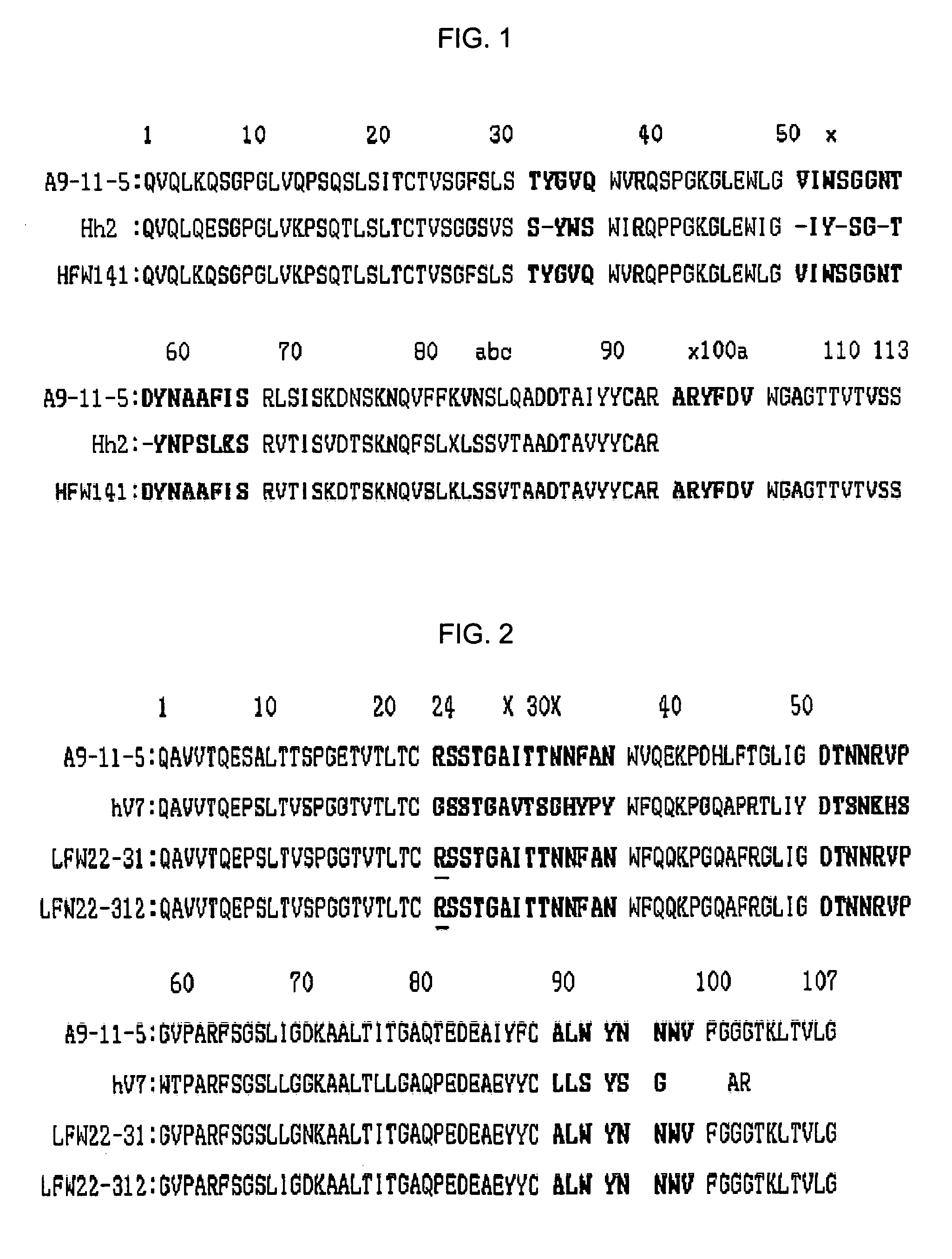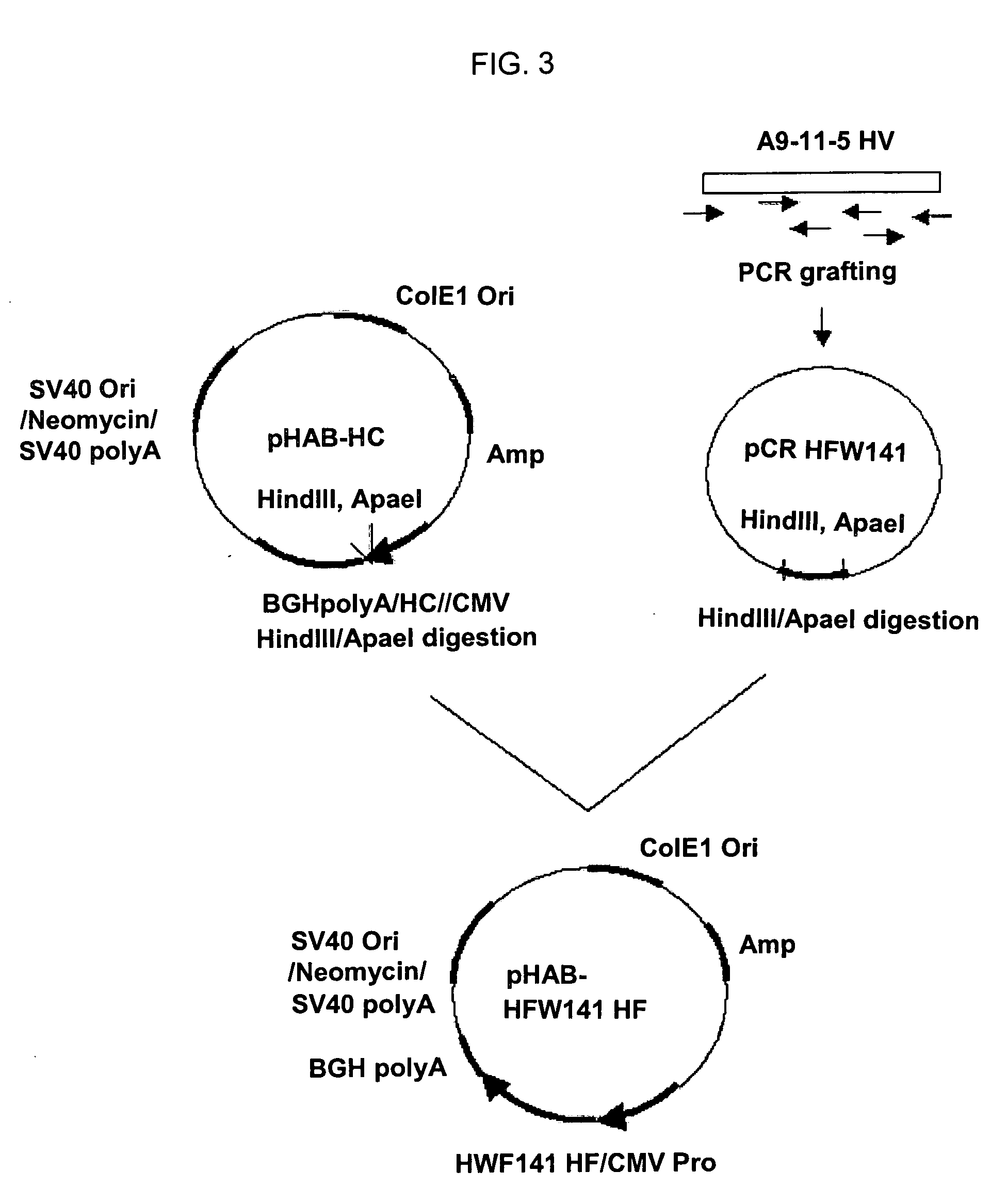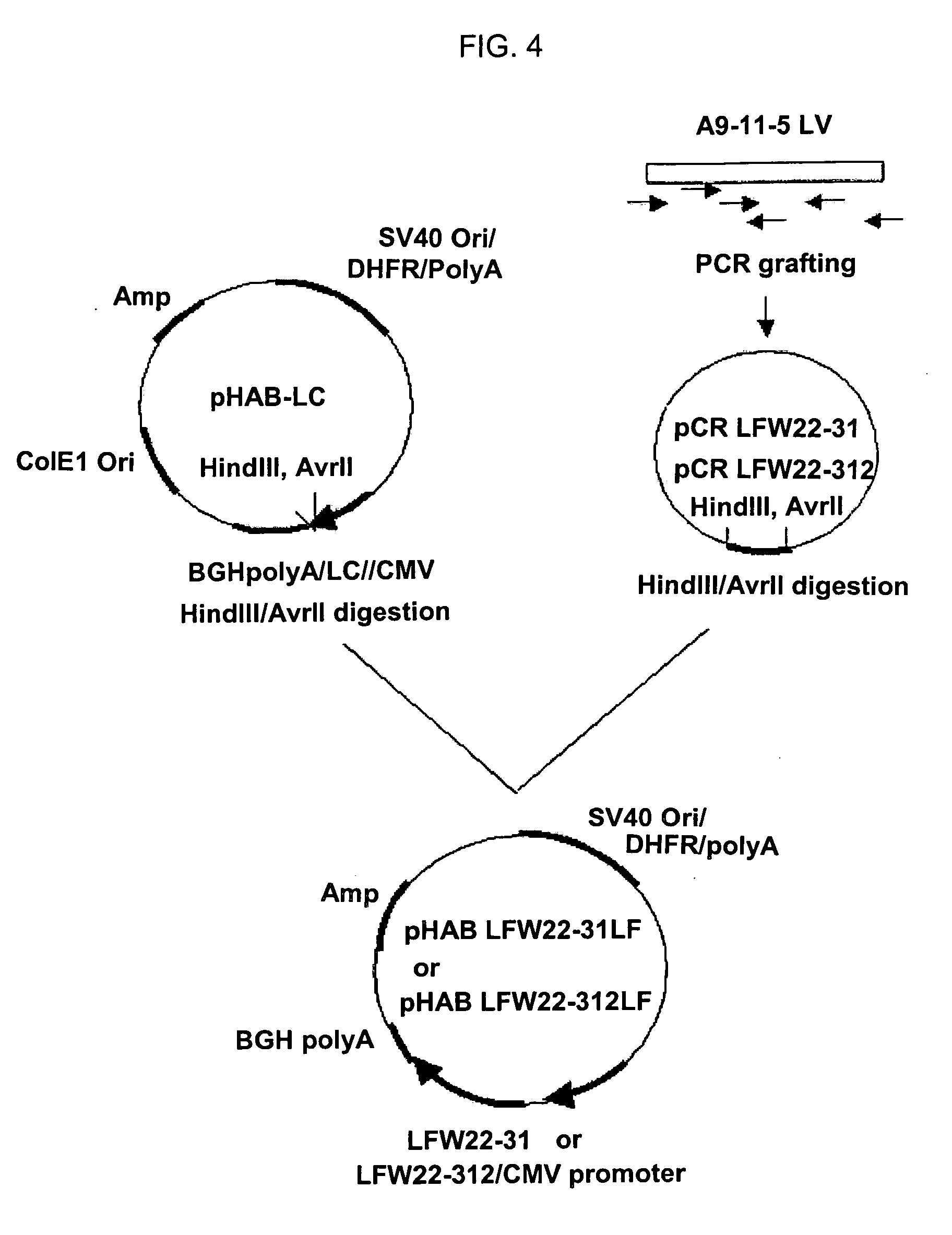Humanized antibody against S-surface antigen of hepatitis B virus
a technology humanized antibody, which is applied in the field of humanized antibody against s-surface antigen of hepatitis b virus, can solve the problems of high toxicity of interferon , high risk of inducing a mutant resistant to lamivudin. , to achieve the effect of low antigen specificity, high toxicity and high toxi
- Summary
- Abstract
- Description
- Claims
- Application Information
AI Technical Summary
Problems solved by technology
Method used
Image
Examples
example 1
Construction of a Gene Encoding a Heavy Chain Variable Region of a Humanized Antibody
[0042] PCR was conducted using a gene encoding the heavy chain variable region of the mouse monoclonal antibody A9-11-5 (Accession NOs: KCTC 18020P and KCTC 18021P) against HBV S-surface antigen as a template and a primer pair of SEQ ID NOs: 1 and 12, to amplify gene A encoding the heavy chain variable region of the humanized antibody carrying a leader sequence. The amplified PCR product was electrophoresed on an agarose gel and recovered from the gel using a QIAgel extraction kit (Qiagen, USA).
[0043] Gene A thus purified was subjected to PCR with a primer pair of SEQ ID NOs: 1 and 3 or SEQ ID NOs: 2 and 12. Each of the amplified PCR products was digested with StuI (BioLabs Inc., USA) at 37° C. for 2 hrs, and then, treated with T4 DNA ligase (BioLabs Inc, USA) at room temperature for 1 hr, to prepare gene B encoding the heavy chain variable region.
[0044] PCR was conducted using gene B as a templa...
example 2
Construction of a Full-Length Heavy Chain Gene of a Humanized Antibody and an Expression Vector Thereof
[0049] In order to improve the expression efficiency of the gene encoding the heavy chain variable region of the humanized antibody, primers were so designed as to insert the Kozak sequence (Kozak, M. Nuc. Acids Res. 15: 8125-8148, 1987) in front of the heavy chain leader sequence of the humanized antibody and replace the codon TTA encoding the 4th amino acid, leucine, of the heavy chain leader sequence with CTG preferable used in animal cells. The modified heavy chain leader sequence of the humanized antibody is shown in Table 2.
TABLE 2PrimerSequenceMouse heavy chainCGAC ATG GCT GTC TTA TTC CTG CTC CTC TGC CTGleader sequence M A V L F L L L C LHumanized heavyC ATG GCT GTC CTG TTC CTG CTC CTC TGC CTGchain leader M A V L F L L L C Lsequence(SEQ ID NO:1)
[0050] Gene HFW141 encoding the heavy chain variable region of the humanized antibody prepared in Examp...
example 3
Construction of a Gene Encoding a Light Chain Variable Region of a Humanized Antibody
[0054] PCR was conducted using the gene encoding the light chain variable region of mouse monoclonal antibody A9-11-5 specifically recognizing HBV S-surface antigen as a template and a primer pair of SEQ ID NOs: 13 and 22, to amplify gene A′ encoding the light chain variable region containing a leader sequence. Gene A′ was subjected to agarose gel electrophoresis and EtBr staining, and then, recovered from the gel using a QIAgel extraction kit.
[0055] Purified gene A′ was subjected to PCR with a primer pair of SEQ ID NOs: 14 and 22 or a primer pair of SEQ ID NOs: 13 and 15. The amplified PCR product was digested with KpnI (BioLabs, Inc., USA) at 37° C. for 2 hrs, and treated with T4 DNA ligase (BioLabs, Inc., USA) at room temperature for 1 hr, to obtain gene B′ encoding the light chain variable region.
[0056] PCR was carried out using gene B′ as a template and a primer pair of SEQ ID NOs: 16 and 22...
PUM
| Property | Measurement | Unit |
|---|---|---|
| diameter | aaaaa | aaaaa |
| temperature | aaaaa | aaaaa |
| temperature | aaaaa | aaaaa |
Abstract
Description
Claims
Application Information
 Login to View More
Login to View More - R&D
- Intellectual Property
- Life Sciences
- Materials
- Tech Scout
- Unparalleled Data Quality
- Higher Quality Content
- 60% Fewer Hallucinations
Browse by: Latest US Patents, China's latest patents, Technical Efficacy Thesaurus, Application Domain, Technology Topic, Popular Technical Reports.
© 2025 PatSnap. All rights reserved.Legal|Privacy policy|Modern Slavery Act Transparency Statement|Sitemap|About US| Contact US: help@patsnap.com



